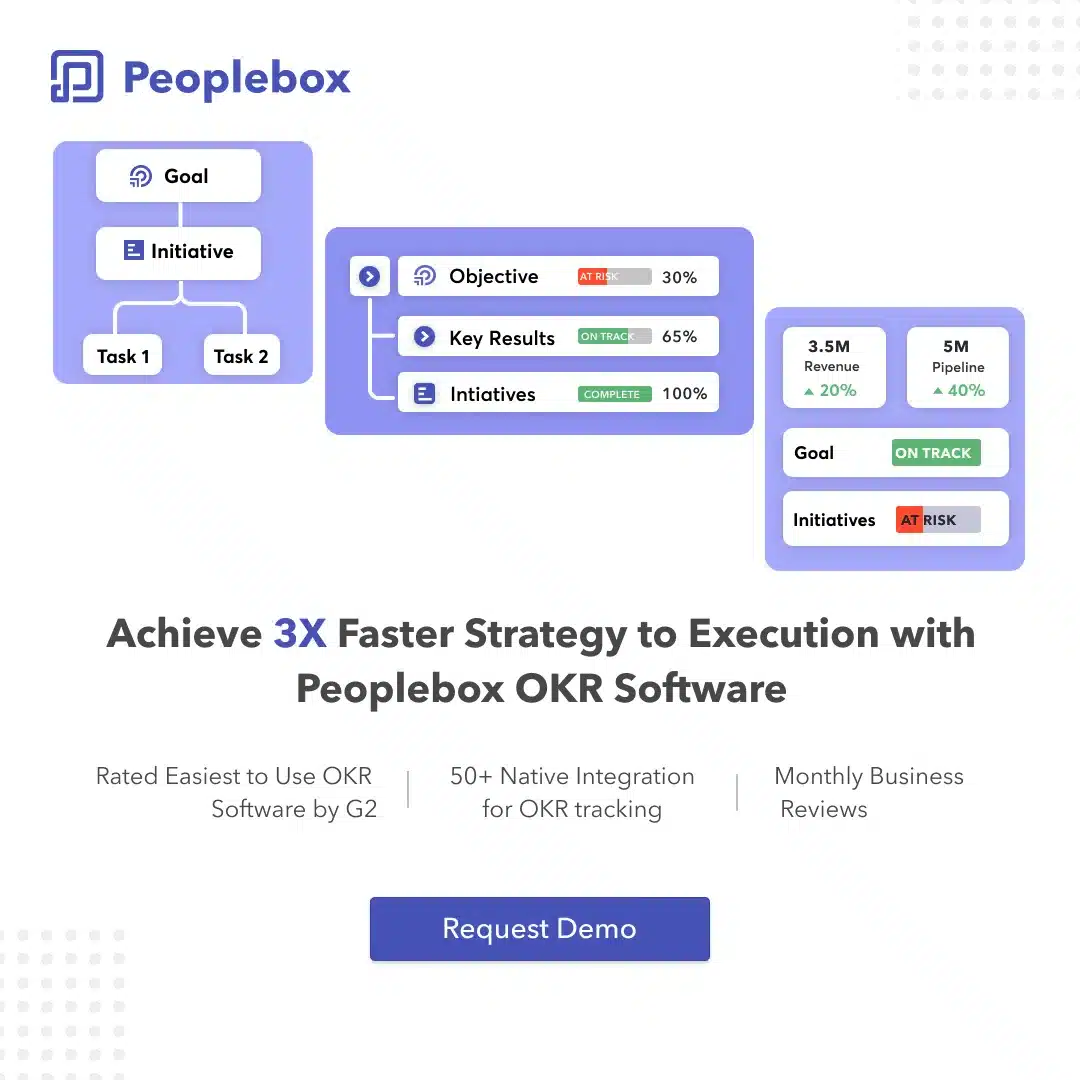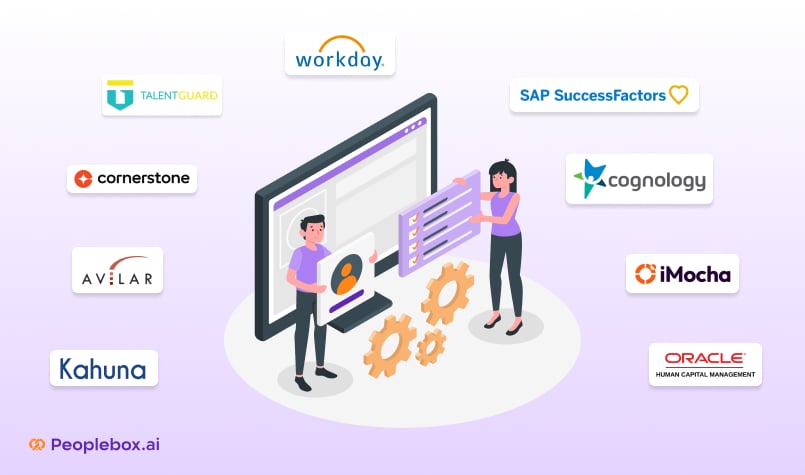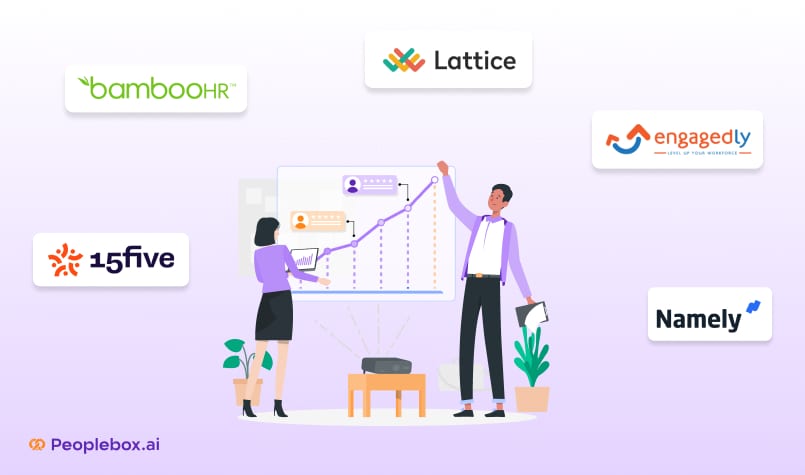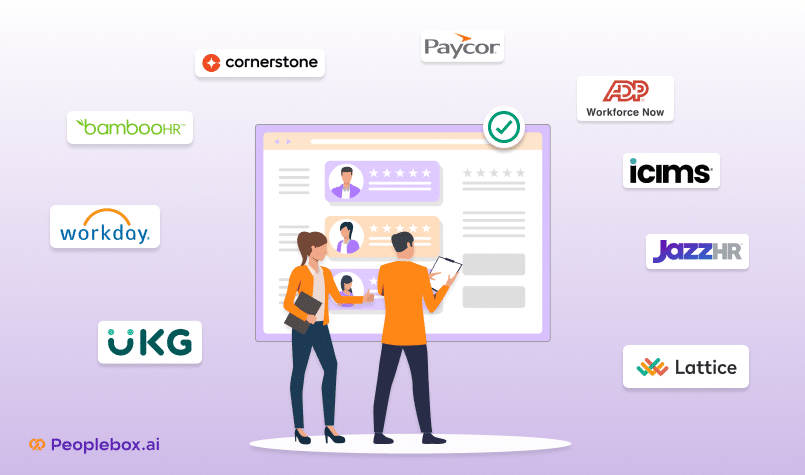
Hybrid remote, the term is getting more common as the economies are getting back on track amid the pandemic.
Things are moving to a safer environment for people to work outside, some companies have recalled staff to the workplace.
For example- Top-tier investment bank JPMorgan asked its traders, bankers, brokers and research analysts to return to its offices by Sept. 21.
While some other companies like Facebook, have embraced remote work settings for a long term period.
And what some others are doing is experimenting with hybrid remote teams where a combination of remote and in-office employees work together.
So… What do the employees want?
A recent Hibob study found that 60 % of employees are comfortable returning to an office environment, while 40 % of workers are not ready to come back.
Virtual Coffee For Remote Teams
CoffeeConnect helps build coworker connections in a remote/hybrid work setup and enable inclusive fun with rapid-fire quizzes & virtual coffee.
OKR Software - Rated 4.8 on G2
Empower your managers to be a better leader with essential performance tools & personalized coaching support.
And what about the employers?
In a survey result of 800 corporate executives around the world, across all sectors, 38%of respondents expect their remote employees to work two or more days a week away from the office after the pandemic.
We can clearly anticipate that the concept of hybrid remote teams is going to be the new future of corporate world post-pandemic.
The hybrid remote approach is what usually happens when a previously co-located company starts hiring remote workers.
As a result, major office exists with remote workers mostly playing a minor or equal role. A hybrid approach may vary from company to company.
It may work with a major portion of the total employees working in a physical office while the rest working remotely or the reverse.
Or else designate certain days for in-office meetings and collaboration, and remote days for work involving individual focus.
“A survey in May showed that 55% of US workers want a mixture of home and office working.”
Some companies are going further. Kissflow, a digital workplace service provider with offices in the US and India, has introduced a mixed working model called REMOTE+. This combines three weeks of working from anywhere with one week of office-based work.
Remote-First vs. Remote-Friendly: What’s The Difference?
Challenges of going hybrid remote

Of course, hybrid remote working patterns won’t suit everyone. So before directly shifting to this mixed model, do consider the challenges it may bring.
Sid Sijbrandij, CEO of web development platform GitLab, calls hybrid remote work “the worst of both worlds”
Here is a list of challenges you will be facing while implementing a hybrid model for your company.
1. Adjustment issues
Take, for example, the people who are more fond of a fixed routine. They may find it difficult to adjust to the back and forth between office work and remote work settings that hybrid work requires.
It’s not that hard to adjust in a remote or office setting. Some of your employees may work their best in remote while some of them might be more productive in a co-working space.
But doing both might be difficult to adjust for some people.
2. Who has more power?
Under a hybrid model, a head office tends to have a disproportionate share of power. And the in-office employees often have the edge over remote workers because of their visibility.
Companies who have newly shifted to a hybrid model are often seen blaming the lack of productivity on remote workers. As a result, remote workers get less access to promotions, advancement, and development opportunities.
Just because your remote employees are not visible doesn’t imply they are not working hard enough. Take decisions based on the end results and not on what you can see in front of your eyes.
Therefore remote workers often find themself to overwork to prove themselves extra strongly. So that they are also considered for promotions or positions that may be given out.
This may lead to remote employees feel like a “second-class citizen” in your company rather than an equal part of a larger team.
3. Which group are you in?
There is a constant risk of creating in-group and out-group dynamics in hybrid teams. In other words, a hybrid model can initiate a divide between those working in the office and those working remotely. This dynamics can affect your teams’ collaboration and increase conflict among your employees.
4. Outside the loop
Remote workers may find it difficult to stay in the loop. Partially distributed teams also commonly face communication problems. Which harms the team’s effectiveness and performance. And creates a lack of trust and team spirit among the employees.
You need to be proactive to successfully run a hybrid company especially in case of maintaining communication amongst each level of your employees. Leverage all of the necessary communication tools at your disposal. Put equal emphasis on both formal and informal communication.
5. Does your company culture goes with the hybrid model?
Establishing a strong company culture and ensuring high job satisfaction is an even more complicated task for hybrid workplaces. Remote employees are often not considered when it comes to company culture as companies tend to build their culture around the in-office employees.
Since hybrid creates two fundamentally separate employee experiences to manage. You have to consistent how you treat remote vs. in-office employees, this can lead to confusion, misunderstanding, feeling unappreciated, and even cultivate negative or toxic company culture.
Virtual Coffee For Remote Teams
CoffeeConnect helps build coworker connections in a remote/hybrid work setup and enable inclusive fun with rapid-fire quizzes & virtual coffee.
OKR Software - Rated 4.8 on G2
Empower your managers to be a better leader with essential performance tools & personalized coaching support.
Just introducing the remote work option for your employees is not enough. You have to provide your employees with the necessary training and resources to help them make a balance in the new work scenario without affecting their work quality. You can start by establishing remote work policies for your teams.
6. Lack of leadership or team buy-in
Where do you put your management/leadership team? Remote or co-located?
The hybrid model creates confusion in leadership. Most companies with a hybrid model prefer a leader who will come to the office. Your remote employees may see it as prejudice and feel undervalued just because they are not physically present in the office.
If a leader doesn’t get the proper training to maintaining a team consisting of both in-office and remote workers, this will only bring new issues for your company.
Virtual Coffee For Remote Teams
CoffeeConnect helps build coworker connections in a remote/hybrid work setup and enable inclusive fun with rapid-fire quizzes & virtual coffee.
OKR Software - Rated 4.8 on G2
Empower your managers to be a better leader with essential performance tools & personalized coaching support.
Benefits of hybrid remote teams

Although the hybrid model has many challenges, the pros will greatly outweigh the cons. Here is a list of benefit you will enjoy with a hybrid model at work-
1. Enhances the productivity of in-office employees
A company that already has a sizeable office can set workflows for remote workers. This will save you from over-crowding the office space.
More than half of in-office employees wish they could work from home, according to a global survey of a global organizational consulting firm.
Since almost half of your employees will be working remotely, the calm in-office environment will promote productivity.
2. Allows you to hire talent from across the globe
Hybrid work is great for companies who have specialized hiring requirements or simply big scale hiring requirements. As it will allow you to hire from the world talent pool.
Hybrid work models, done right, will allow organizations to better recruit talent, achieve innovation, and create value for all stakeholders. It will give you access to global talent. Employees and employers are now more attracted to flexible working options.
This is quite evident in the fact that the share of remote job postings on LinkedIn grew 91% from the first week of March 2020 to the last week of April 2020.
So if you are still hesitant to hire remote employees you might be at the risk of losing the best talent for your company.
It also means an expansion of the hour range of support for your customers.
3. Prepares you for a transformation
Going hybrid remote is also a great starter for a good remote strategy for the whole company. For some companies, it may seem unpractical to unwind all of their office space and suddenly transform into an all-remote organization.
The hybrid remote is the perfect solution for them.
It will allow you to slowly introduce remote working in your team. So that you can see how your employees are embracing and making this shift. It’s a transition from remote-friendly to remote first.
4. Cost-Effective
Hybrid remote model will save your money by reducing real estate expenses. You can also consider reducing the expense employees spent on commute as they will be working remotely.
“This has worked very well so far, with many enjoying seeing everyone again, the flexibility, and it is much cheaper than a physical office”- NOVOS CEO Antonio Wedral explains.
5. Provide Flexibility
It offers flexibility to both the employees and employers.
In the United States, 61% of the workforce don’t want to work remotely more than a few hours a week.
Nicholas Bloom, a Stanford University economics professor with expertise in remote work, believes that once the pandemic subsides, working from home two days a week will be optimal for balancing collaborative and quiet work, while benefiting from the reduced stress of less commuting.
Tips for going hybrid remote

- Since your employees are working from different locations transparency becomes more crucial. Making things like- who is working on what, who has edited the most part of a document, who has achieved what, how a decision has been taken, who have contributed most in a project will make each employee’s contribution and efforts to your organization visible. Make sure that people don’t miss out anything, make sure all conversations are captured appropriately.
- Don’t let your remote workers fall outside the loop. Keep remote-workers as connected as your in-office employees.
- Host company-wide retreats to make both your in-office and remote employees feel included. Help them connect and make connections.
- Don’t stick to older systems and processes that worked during office-based model. Because the structure of employees is different in a hybrid model. What has worked earlier evidently isn’t going to work here as well. Adhering to the old systems will only attract more problems.
- Encourage informal digital conversations. Since meeting colleagues regularly in no more possible in a hybrid model. Make conversations more digital. Use online platforms and tools to help them bond.
- Build a culture of documentation. Document everything if you don’t want your employees to work with less information or insufficient information. This insufficiencies for a longer period may cause misunderstandings, mistakes and confusions.
- Create accountability & trust among your employees. So that they can collaborate well even while working apart.
- Choose the Right Tools. Use communication tools like slack, call management software, use employee engagement tools such as PeopleBox, video calling tools such as zoom, Google meet etc.
- Adopt an async form of communication for smooth and effortless communication for interacting with and managing remote plus in-office employees.
- Don’t be partial towards either in-office or remote employees when it comes to compensation. Fair compensation will infuse trust that you are not taking anyone for granted.
- Keep employees informed and encourage their feedback on the transition.
- Adopt and adapt the best of both the worlds.
Pitfalls to avoid
- In-office employees are valued more
- Having no rule book
- Hybrid means two groups of employees.
- Communication is synchronous first.
- Team meetings exclusively in a co-located time zone
Examples of companies transitioning to hybrid remote

Below are examples of companies who are publicly sharing their transformation towards a hybrid remote model.
HubSpot
In 2021, HubSpot has declared to shift to a hybrid remote-office model. From January 2021, employees at HubSpot will have three options to choose from based on their preference.
How are they doing it?
Employees who will go to HubSpot office 3 or more days per week will get an in office set up. Employees who choose to go to HubSpot office 2 or fewer days per week will get support for a home desk set-up and a “hotel desk” for office. Employees who choose to work fully remote will get an allowance for a productive home office set-up.
Apart from this, they have introduced subtle changes in their company culture to make their hybrid remote setting more inclusive. For example, they are set to introduce Location-agnostic benefits & perks and remote-first onboarding from next year. It will create the opportunity for their employees to work when and where it’s best for them.
Reddit has also offered their employees the flexibility to pick where they would like to work: in the office, remotely, or a combination of the two. With exceptions for some specific roles that need to be performed from their offices or specific geographic locations, such as Facilities or IT Support.
How are they doing it?
They have proposed to create virtual and in-person interactions to build culture and foster trust, collaboration, and innovation among their teams.
They will be eliminating geographic compensation zones in the US. And for those who chose to work in office Reddit has declared to make arrangements for casual and coffee shop-style seating with private space for focused work.
Figma
Figma is also bidding adieu to their mostly in-person approach. And moving towards a hybrid model once offices are safe to open again.
How are they doing it?
They started with getting a complete picture of what their employees want with a survey. They gathered hard numbers, via both write-in and multiple-choice questions.
The data shows that their employees valued flexibility but still had an attachment towards the office. They also made the survey results and the decision making the process of moving to this new model- all transparent.
They have given a condition that sufficient working hours has to overlap to get approved for remote work. They are working on setting standard working hours for all US-based employees. They are dedicated to moving their teams towards more async and artefact-based communication.
Google CEO Sundar Pichai has recently announced a hybrid model to meet his employees’ distinct needs, work style and preferences.
An intra-office survey of employees at Google showed that 62% employees believe they only need to be in the office “some days” in order to do their work well, while 20% don’t feel like they need to come to the office at all.
How are they doing it?
They have extended their global voluntary work from home option until September, for roles that don’t need to be in the office.
They are making a few changes including rearranging its existing offices and figuring out more long-term remote work options.
Although they still firmly believe in meeting in-person and being together is super important when it is about solving hard problems and creating something new.
According to CNBC, Google’s hybrid work model would require employees to live within commuting distance to their offices.
Recently, it has focused on making changes to its internal communication forums as well.

How to upgrade to all-remote
Here are a few things to keep in mind if you are trying to upgrade from a remote-friendly to a remote-first company-
- Ask very specific questions to determine how prepared a company is to thrive in a 100% remote setting. Push for a larger response rate. Gather the information you want. It may be hard and time-consuming…but worth it!You don’t have to keep the questions anonymous. So that you can ask follow up questions if necessary.
- Start at the top of the organizational chart. Help your leaders adjust to the new mode of working so that they can help and support team members working under them in a better way.
- Cultivate hybrid remote mindset. Working remotely primarily may take some time to adjust for some people. Especially if they are working remotely for the first time. Thus help them first to have the proper mindset to be able to work remotely. You can initiate this change with a handbook and with proper training.
- Establish a hybrid remote infrastructure. Provide your employees with the equipment and tools necessary for collaboration.
- Embrace documentation and transparency. The exercise of documenting each and every project, conversation and decision will prepare you for a remote-first model.
- Change the power dimensions. Even while working hybrid doesn’t make the power in your organization centralized. Give equal opportunity to remote workers and encourage your employees to move towards all remote working style.







